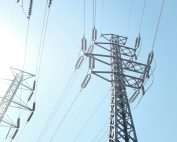Sassnitz, November 2022. The Fraunhofer Institute for Wind Energy Systems IWES has successfully completed a boulder detection campaign off the coast of the island of Rügen in the German Baltic Sea on behalf of 50Hertz. In order to allow efficient planning of the grid operator’s new offshore platform seismic measuring techniques have been employed to detect boulders below the seafloor in. This innovative process allows identification of large rocks up to 100 m below the seafloor. That enables planning of windfarms and platforms as reliable as possible and thus more cost-effective while simultaneously minimizing the risks associated with the installation. The technical procedure in this form is unique and is continuously being developed further.
The planning and installation of an offshore platform requires precise knowledge of the subsoil, as large rocks discovered too late can delay planning and construction, thus rendering the whole project more expensive. Hence, construction preparation measures are always carried out before the construction of transformer platforms. Fraunhofer IWES employed the new method to check whether there are boulders in the subsurface of a wind farm area that had already been presurveyed for 50Hertz’s Ostwind 3 project. The seismic detection can be utilized to clarify whether it might be necessary to change the position of the transformer platform at an early stage to avoid damage during installation.
Data acquisition for boulder detection with the Manta Ray G1
With the aid of the patented Manta Ray G1, the IWES scientists can localize rocks and boulders at a depth of up to 100 m below the seafloor. The measuring system comprises a towed array equipped with seismic sensors (hydrophones) as well as positioning systems. During the survey of an area, the hydrophones pick up the reflected sound waves previously emitted by a signal source. This allows the subseafloor to be recorded step-by-step and mapped in three dimensions. Not only does the measuring system map the sediment layers, but its special design also enables the detection of boulders buried in the seafloor. This is possible thanks to the method of diffraction imaging, through which the acoustic energy diffracted by the boulders can be traced back to its point of origin. This method thus allows accurate localization of rocks within the mapped seafloor sediments.
Seismic measuring results reduce risks
“For us, precise knowledge of subsoil conditions is important for avoiding possible installation risks. It allows us to avoid construction delays and thus save costs. The technique has proved that it is effective and delivers the essential measurements that we need for precise planning,” said Dr. Henrich Quick, Head of Offshore Projects at 50Hertz.
Dr. Benedict Preu, Head of Department Subsurface Investigation at the Fraunhofer IWES, explained: “We employ our seismic measuring techniques to help 50Hertz to plan the platform as precisely as possible and minimize risks. We are continuously developing the technology further and know from our experience in preceding projects that the method works well and the data acquired are meaningful. This allows us to support the entire offshore industry in acquiring accurate knowledge of the subsoil and thus identify suitable solutions for all construction projects. In doing so, we are driving the expansion of the wind energy sector further.”
The detection on behalf of 50Hertz was performed within just one week aboard the survey vessel MV Situla. During this period, the vessel was mobilized, i.e., all the equipment and technology was made ready for use and tested, the measurements were performed, and the vessel was subsequently demobilized again.
Source: Fraunhofer IWES














